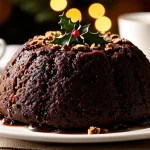Essential preparation tips for the perfect homemade fish and chips
Achieving homemade fish and chips that truly stand out begins with selecting the right fish and potatoes. For fish, opt for varieties like cod, haddock, or pollock, which have a mild flavor and flaky texture ideal for frying. These fish not only hold up well during cooking but also absorb batter perfectly, resulting in that sought-after crispiness. When choosing potatoes, starchy types such as Maris Piper or Russet are best. Their high starch content ensures chips turn out fluffy on the inside with a golden, crunchy exterior.
Proper fish preparation is crucial for a crispy finish. Thoroughly pat the fish dry with paper towels before battering; excess moisture prevents the batter from adhering properly and leads to sogginess. If the fillets are too wet, consider lightly dusting them with flour, which helps the batter stick uniformly. Similarly, preparing chips requires cutting potatoes into consistent sizes for even cooking. Soaking raw potato strips in cold water for at least 30 minutes removes excess starch, preventing chips from sticking together and promoting a crisp texture once fried.
Have you seen this : What are the key flavors in a traditional British Christmas pudding?
Preparation also extends to drying the chips well after soaking; any water left on their surface can cause oil splatters and reduce the crispiness. Before frying, ensure the potatoes are completely dry by using a clean kitchen towel or paper towels. This step is essential for achieving the ideal contrast of a soft interior and crispy exterior in homemade chips, elevating the overall texture and enjoyment of the dish.
Techniques for making crispy batter and golden chips
Achieving a crispy batter is key to outstanding homemade fish and chips preparation, and it begins with the batter mixture itself. A classic batter typically combines cold sparkling water or beer with plain flour, sometimes enhanced with baking powder for additional lightness. The cold temperature of the liquid is essential; it slows gluten formation in the flour, preventing a dense coating. For those seeking gluten-free options, rice flour or chickpea flour can replace wheat flour, still yielding a delightfully crisp result.
Also to discover : How do you make a classic sticky toffee pudding?
Maintaining the batter’s consistency is equally important. It should be thick enough to coat the fish evenly without dripping excessively. When the batter is too thin, it won’t adhere properly and can become soggy after frying. Conversely, overly thick batter can overpower the fish’s delicate flavor and texture. To test readiness, dip a wooden spoon into the batter: it should coat the spoon with a smooth yet substantial layer that falls off slowly.
Temperature control during frying plays a pivotal role in achieving the perfect golden chips and batter. The oil must be heated to around 180°C (356°F) before frying to ensure immediate sizzle upon contact, sealing in moisture within the fish and chips. Maintaining this temperature prevents excessive oil absorption, which causes sogginess. One effective method is double frying: first, frying chips at a lower temperature to cook them through, then increasing heat to crisp the exterior. This technique creates the ideal contrast of fluffy insides with golden, crunchy outsides.
In summary, mastering batter recipes for fish involves balancing ingredients and temperature to maximize crispiness. Combining this with strategic frying methods results in homemade fish and chips that can rival those from your favorite takeaway.
Frying methods to master at home
When mastering how to fry fish and chips at home, selecting the right frying oil is crucial. Oils with high smoke points like sunflower, vegetable, or peanut oil are preferred because they withstand the high temperatures required without breaking down. This stability preserves the flavor and ensures a clean, crisp finish. Avoid oils with low smoke points, as they can impart off-flavors and increase the likelihood of soggy results.
Both shallow frying and deep frying have their places in homemade fish and chips preparation, but deep frying is generally favored for achieving that classic crispiness. Shallow frying uses less oil and can be more accessible, but it often leads to uneven cooking and less crisp texture. Deep frying fully immerses the fish and chips, conducting heat evenly and creating a golden exterior while retaining moisture inside.
To avoid oily or soggy fish and chips, controlling oil temperature is paramount. Keeping the oil consistently around 180°C (356°F) ensures the batter seals quickly, preventing excess oil absorption. Using a thermometer helps maintain this precision. Overcrowding the fryer causes temperature drops, which can result in greasy food. Fry in small batches to maintain heat and crispiness. Also, draining fried items on a wire rack instead of paper towels helps maintain their crunch by preventing steam buildup.
Overall, careful management of frying oil type, temperature, and technique is key to perfecting homemade fish and chips without sogginess.
Seasoning and serving ideas to elevate your dish
Enhancing homemade fish and chips with thoughtful seasoning can transform the meal from simple to spectacular. Classic seasoning starts with a sprinkle of good-quality sea salt and freshly ground black pepper, applied immediately after frying to lock in flavor. For those seeking a more adventurous twist, consider blends incorporating smoked paprika, garlic powder, or even a touch of cayenne pepper for subtle heat. These additions complement the batter’s crispiness without overwhelming the delicate fish.
When it comes to serving suggestions, traditional accompaniments remain favorites. Tartare sauce, made with tangy pickles and fresh herbs, balances the richness of fried fish. Lemon wedges add freshness and acidity, cutting through the oiliness and brightening each bite. Mushy peas offer a classic British touch, providing a creamy, vibrant contrast. For variety, try homemade curry sauce or vinegar-based dips, which are also popular alternatives that enrich the flavor profile.
Presentation is often overlooked but plays a vital role in elevating the dish. Serving fish and chips on a rustic wooden board or lined paper evokes a takeaway style while adding charm to home dining. Garnishing with chopped parsley or a few lemon slices brings color and a subtle aroma that enhances appeal. Using small bowls for sauces encourages sharing and keeps the meal interactive and engaging.
Incorporating these fish and chips seasoning and serving ideas ensures not only delicious taste but also a memorable dining experience that invites repeated enjoyment.
Troubleshooting and pro tips for homemade fish and chips
Cooking homemade fish and chips perfectly can be challenging, but understanding common fish and chips mistakes helps you improve quickly. One frequent issue is soggy batter. This often occurs when the batter is too thin or the oil temperature is too low. Maintaining oil around 180°C (356°F) ensures the batter crisps instantly, sealing moisture inside. Another common problem is greasy chips, usually caused by overcrowding the fryer, which lowers oil temperature. Fry in small batches to keep the oil hot and achieve crispy, non-greasy results.
Undercooked fish is another pitfall in homemade fish and chips preparation. This happens if the fillets are too thick or the oil temperature is inconsistent. Use thinner fillets and monitor cooking time closely. A reliable thermometer is invaluable for consistent frying. If the fish cooks too quickly on the outside but remains raw inside, lower the temperature slightly and fry a bit longer.
Experts recommend several professional tips for fish and chips. First, always dry the fish thoroughly before battering to prevent sogginess. Second, implement the double frying method for chips: the initial fry cooks the potato through, and a second, hotter fry crisps them perfectly. Third, drain fried items on a wire rack instead of paper towels to avoid steam softening the crust.
Making fish and chips at home is rewarding, and embracing these troubleshooting strategies leads to fantastic outcomes. With practice and attention to detail, your dish will rival any takeaway favorite.


